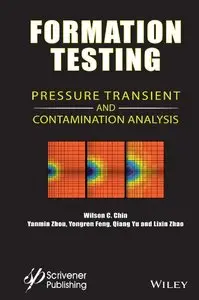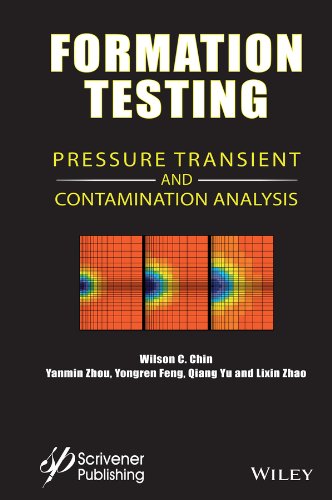Formation Testing: Pressure Transient and Contamination Analysis by Wilson C. Chin, Yanmin Zhou, Yongren Feng, Qiang Yu, Lixin Zhao
2014 | ISBN: 1118831136 | English | 488 pages | PDF | 15 MB
2014 | ISBN: 1118831136 | English | 488 pages | PDF | 15 MB
Traditional well logging methods, such as resistivity, acoustic, nuclear and NMR, provide indirect information related to fluid and formation properties. The “formation tester,” offered in wireline and MWD/LWD operations, is different. It collects actual downhole fluid samples for surface analysis, and through pressure transient analysis, provides direct measurements for pore pressure, mobility, permeability and anisotropy. These are vital to real-time drilling safety, geosteering, hydraulic fracturing and economic analysis.
Methods for formation testing analysis, while commercially important and accounting for a substantial part of service company profits, however, are shrouded in secrecy. Unfortunately, many are poorly constructed, and because details are not available, industry researchers are not able to improve upon them. This new book explains conventional models and develops new, more powerful algorithms for early-time analysis, and importantly, addresses a critical area in sampling related to “time required to pump clean samples” using rigorous multiphase flow techniques. All of the methods are explained in complete detail. Equations are offered for users to incorporate in their own models, but convenient, easy-to-use software is available for those needing immediate answers.
The leading author is a well known petrophysicist, with hands-on experience at Schlumberger, Halliburton, BP Exploration and other companies. His work is used commercially at major oil service companies, and important extensions to his formation testing models have been supported by prestigious grants from the United States Department of Energy. His new collaboration with China National Offshore Oil Corporation marks an important turning point, where advanced simulation models and hardware are evolving side-by-side to define a new generation of formation testing logging instruments. The present book provides more than formulations and solutions: it offers a close look at formation tester development “behind the scenes,” as the China National Offshore Oil Corporation opens up its research, engineering and manufacturing facilities through a collection of interesting photographs to show how formation testing tools are developed from start to finish.



